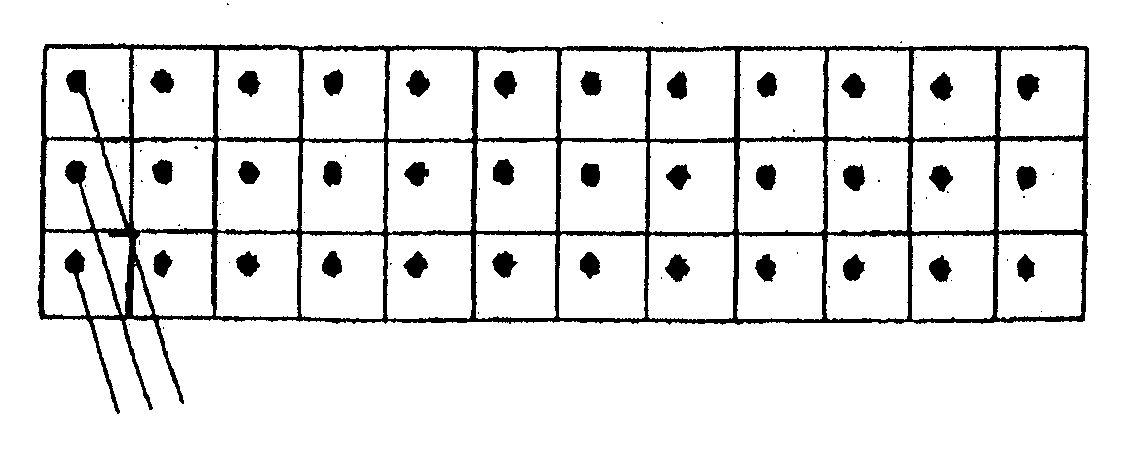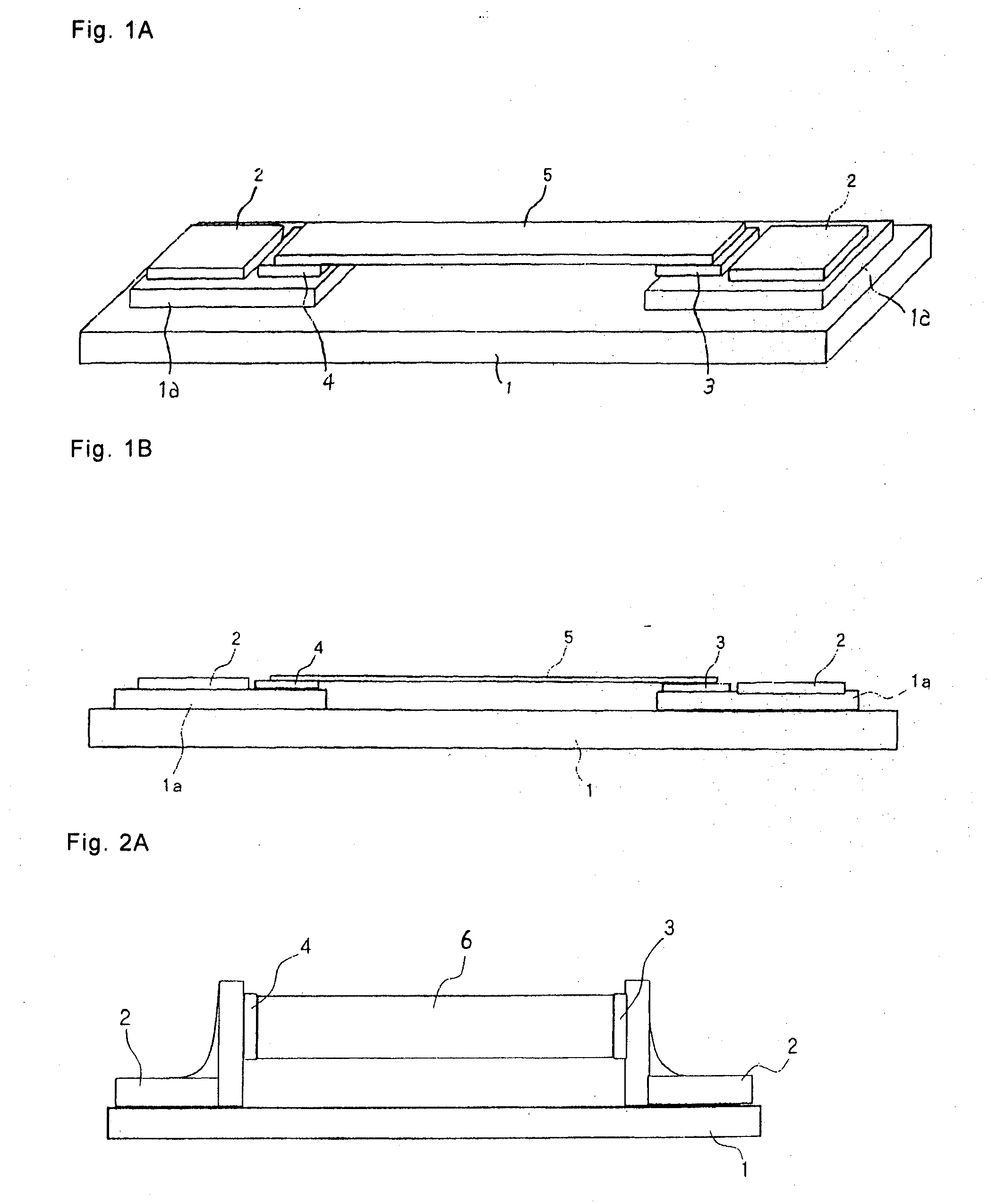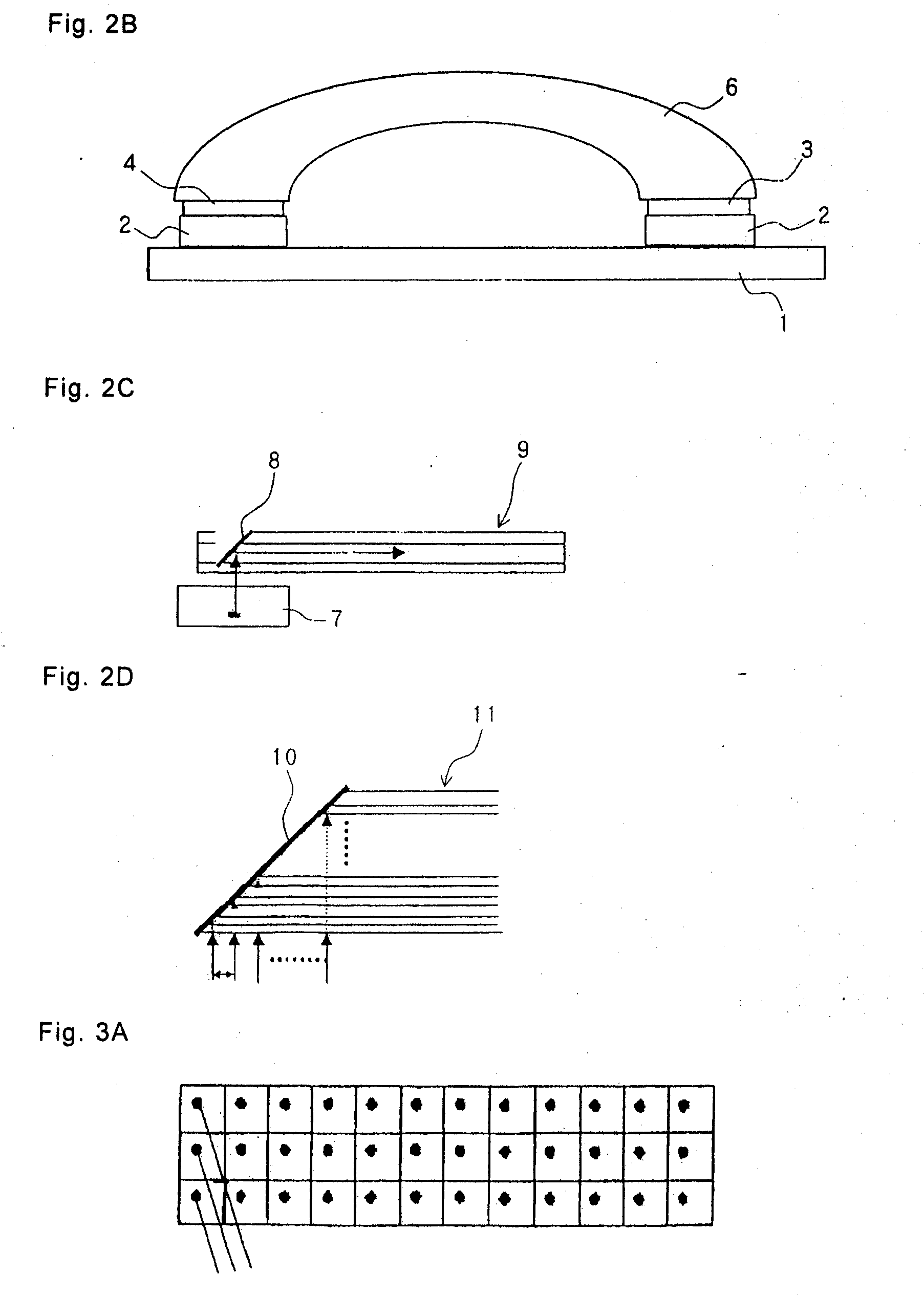Connection structure of two-dimensional array optical element and optical circuit
a technology of two-dimensional array and connection structure, applied in the direction of optical elements, instruments, optical waveguide light guides, etc., can solve the problems of large thickness and difficult to connect structures as a whole, and achieve the effect of reducing the size of the connection structure, efficient connection to each other, and reducing the profil
- Summary
- Abstract
- Description
- Claims
- Application Information
AI Technical Summary
Benefits of technology
Problems solved by technology
Method used
Image
Examples
exemplary embodiment 1
[0055]FIGS. 3A through 3D show Exemplary embodiment 1 of the present invention. FIG. 3A schematically shows a two-dimensional array of optical elements, FIG. 3B is an enlarged view of FIG. 3A, FIG. 3C is a cross-sectional view taken along line A-A′ of FIG. 3B, and FIG. 3D is a cross-sectional view taken along line B-B′ of FIG. 3B.
[0056]According to the present exemplary embodiment, an array of optical waveguides 12 is inclined obliquely to a two-dimensional array of optical elements 16 such as light sources or the like. This arrangement makes it possible to connect a group of optical waveguides to an array of optical elements in three rows, rather than to an array of optical elements in one row which has heretofore been possible (see FIG. 3C). As shown in FIG. 3D, light sources 16 and optical waveguides 12 are connected to each other by micromirrors 15 comprising 45° plane reflecting mirrors or curved reflecting mirrors disposed in portions of optical waveguides 12 for bending light...
exemplary embodiment 2
[0060]FIG. 5A shows Exemplary embodiment 2 of the present invention. According to Exemplary embodiment 2, a basic structure comprises a one-dimensional array of micromirrors 15 and optical waveguides 12 connected thereto, and a plurality of such basic structures are stacked with adjacent basic structures being shifted from each other by a length of one row of optical element array. Optical waveguides 12 are connected to a two-dimensional array of optical elements 16. If each optical waveguide 12 comprises core 13 having a diameter of 50 μm and cladding having a thickness of 25 μm on each side of core 13, then one layer (one step) of optical waveguides 12 has a thickness of 100 μm. Therefore, provided that the light beams from optical elements 16 are appropriately shaped, it is possible to stack optical waveguides 12 in five to ten layers. If one array of optical elements contains 20 optical elements, then about 100 to 200 multiplex parallel light connections can be achieved between ...
exemplary embodiment 3
[0063]FIG. 6 shows Exemplary embodiment 3 of the present invention. According to Exemplary embodiment 3, the structure according to Exemplary embodiment 1 is stacked in multiple layers with adjacent basic structures being shifted from each other by a length of one row of optical element array. According to Exemplary embodiment 3, it is possible to provide parallel multiplex light connections in a higher packing density than according to Exemplary embodiment 2.
[Analysis of Optical Coupling]
[0064]The results of an analysis of an optical coupling among VCSELs 16, micromirrors 15, and optical waveguides 12 will be described below.
[0065]As shown in FIG. 7A, calculations were carried out on the assumption that a Gaussian beam is emitted from VCSEL 16. The spot size of the emitted beam from VCSEL 16 is spread as shown in FIG. 7A. The spot size W0 is represented by the radius of the emitted beam as shown in FIG. 7A. The spot size W(z) is calculated according to the following equation:
w(z)=[...
PUM
 Login to View More
Login to View More Abstract
Description
Claims
Application Information
 Login to View More
Login to View More - R&D
- Intellectual Property
- Life Sciences
- Materials
- Tech Scout
- Unparalleled Data Quality
- Higher Quality Content
- 60% Fewer Hallucinations
Browse by: Latest US Patents, China's latest patents, Technical Efficacy Thesaurus, Application Domain, Technology Topic, Popular Technical Reports.
© 2025 PatSnap. All rights reserved.Legal|Privacy policy|Modern Slavery Act Transparency Statement|Sitemap|About US| Contact US: help@patsnap.com



